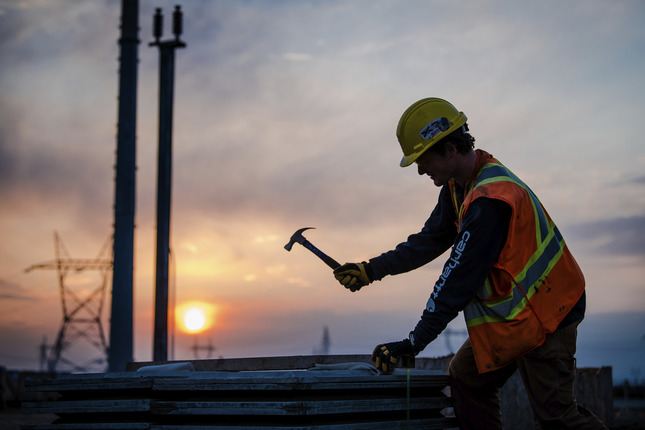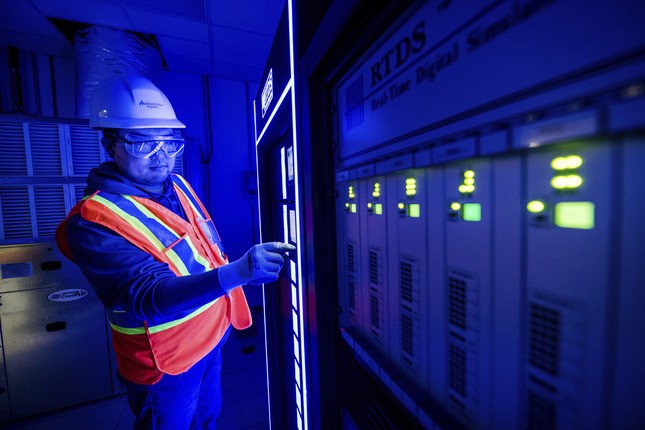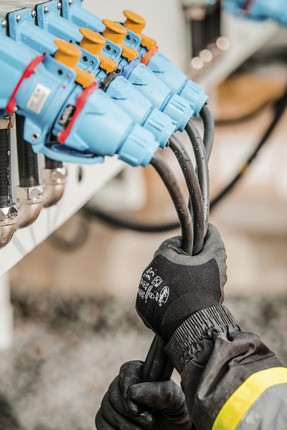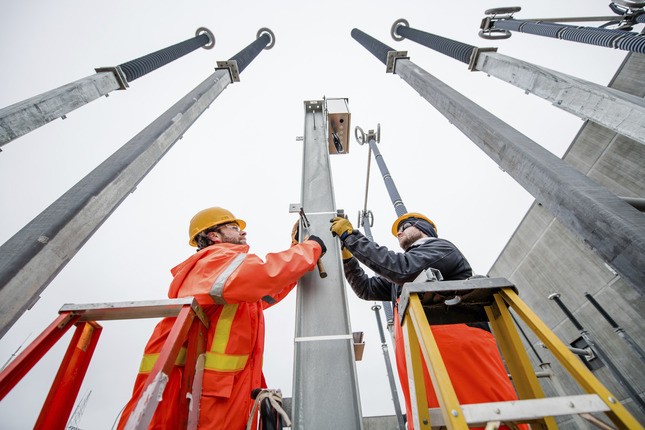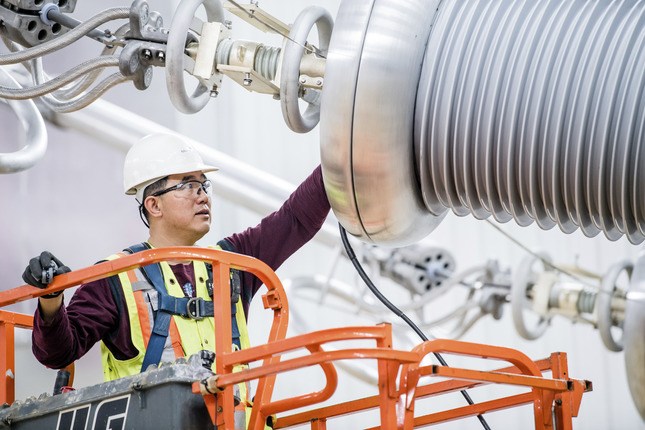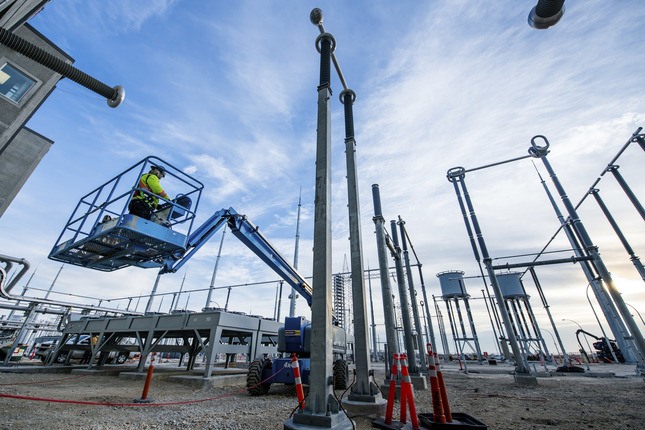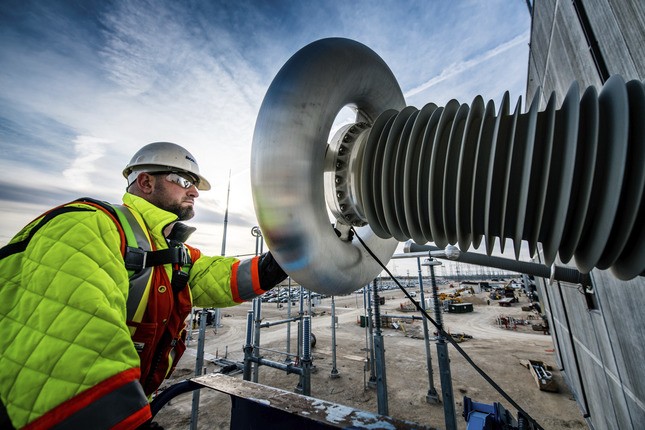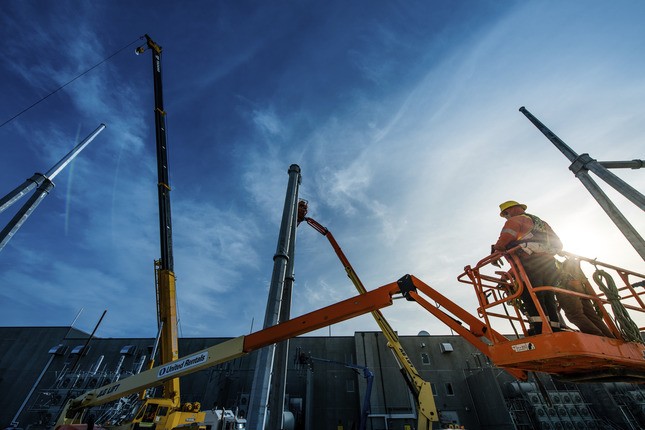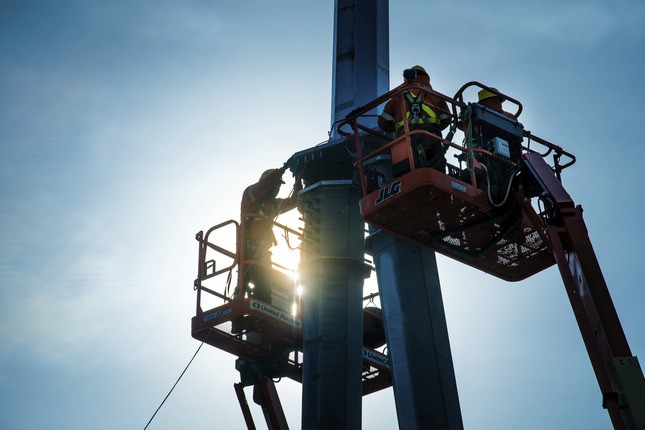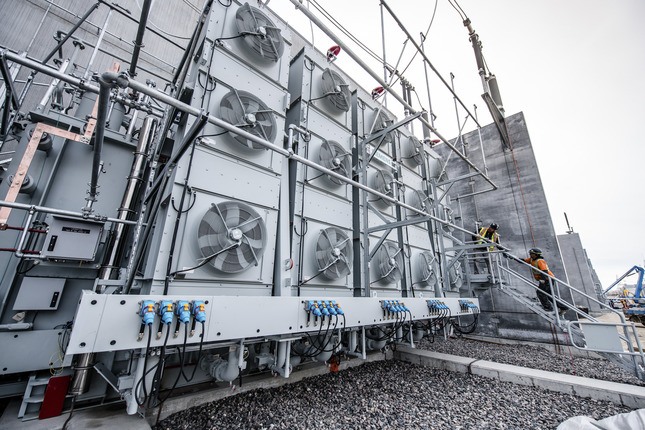
The consortium of Siemens Canada and Mortenson successfully completed the ± 500-kilovolt (kV) Bipole III high-voltage direct-current (HVDC) power converter stations for Manitoba Hydro. The HVDC converter stations are an integral part of the Manitoba Hydro Bipole III transmission project. The entire transmission line will act as an “electricity highway,” bolstering the reliability of Manitoba’s electricity supply by reducing dependence on existing HVDC transmission lines and converter stations while also ensuring low-loss transport of renewable hydropower from northern generating stations to meet growing energy requirements.
HVDC converter stations are specialized substations that support the conversion of electric power from high voltage alternating current (AC) to high-voltage direct current (HVDC), or vice versa, a critical component to interconnecting separate power systems. The HVDC project consists of two stations: Keewatinohk and Riel. The Keewatinohk Station is located in the far north of Manitoba, about 45 km north of Gillam, MB. The Riel Station is located outside of Winnipeg.
The converter stations have a transmission capacity of 2,000 megawatts (MW) – enough to meet over 40 percent of the province’s peak electricity demand. HVDC transmission is the ideal technology to implement when electricity must be transported over vast distances from remote areas where it is produced to urban and industrial centers where it is needed, as HVDC transmission suffers much lower electricity losses than standard AC transmission.
The Siemens Canada and Mortenson consortium was responsible for the turnkey supply of the HVDC converter equipment and associated facilities, with Siemens Canada delivering the system design and the manufacturing, supply, and commissioning of the core HVDC technology while Mortenson provided design support and construction services for the supporting infrastructure, including converter station building, AC filters, and DC switchyards. The remote location of the Keewatinohk Converter Station and the extreme winter weather conditions present at both sites provided interesting logistics and construction challenges for the team.
The converter station scope has four primary areas: AC filters, Converter Transformers, the DC yard, and the Converter Building. The converter building houses the valve halls, auxiliary service blocks, and a central service block. The AC filters contain the high voltage reactors and capacitors that are required for power quality. These areas also have bus work and gantry structures as required by the electrical general arrangement. The converter transformers are located adjacent to the building and provide functions such as electrical isolation, voltage regulation, and phase shifting. The valve halls in the converter building perform the AC/DC conversion. The DC yard contains many reactors, capacitors, resistors, disconnect switches, surge arresters, gantry structures, and the bus work needed to support the DC power requirements. The two converter stations also contain the necessary fire protection, service power, HVAC, lighting, oil containment, communications, and operations infrastructure.
Completed on schedule
Construction executed with no disruption to adjoining projects.
